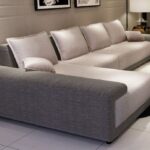The modern workplace has drastically evolved over the past decade. Today, it’s not just about having a desk and a chair—it’s about creating a productive, comfortable, and visually appealing environment that reflects the identity of a company while meeting the needs of employees. At the center of this evolution lies one crucial element: the Office table design. Whether you’re outfitting a corporate building, home office, or co-working space, the office table has become a symbol of work culture, innovation, and functionality. Gone are the days of bulky wooden desks; today’s office tables are sleek, multifunctional, and designed with both style and ergonomics in mind. More businesses are investing in office furniture that does more than just hold a computer. The design and layout of the table now contribute to employee productivity, posture, and collaboration.
Functionality Meets Aesthetics in Office Table Design
One of the most defining features of modern office table design is the seamless blend of functionality and aesthetics. The contemporary workforce demands furniture that not only looks good but also enhances workflow. For example, adjustable-height office tables are gaining popularity for their health benefits and flexibility. These desks can shift from a sitting position to a standing desk with ease, encouraging movement and reducing the health risks associated with prolonged sitting. Meanwhile, modular office table systems are transforming collaborative workspaces, allowing teams to reconfigure their environment based on project needs. Designers are incorporating cable management, charging ports, storage solutions, and integrated lighting into the structure of the table, making it a hub for productivity. With materials ranging from tempered glass to engineered wood and metal finishes, the choices are as diverse as they are stylish.
Personalization and Ergonomics in Office Table Options
Ergonomics have become a critical aspect of office furniture. A poorly designed office table can contribute to back pain, wrist strain, and general discomfort throughout the day. That’s why designers are focusing on human-centered design principles, offering tables that cater to various work styles and body types. From curved edges to keyboard trays and monitor stands, every detail is considered for comfort. But beyond ergonomics, personalization is also becoming more prominent in office environments. Employees are customizing their workspace to match their work habits and personalities. Office tables now come in a variety of colors, sizes, and configurations to reflect individuality while maintaining professionalism. Whether it’s a minimalist Scandinavian design or an industrial aesthetic, the right office table creates a strong visual impact and a sense of ownership for the user.
Types of Office Tables and Their Ideal Use Cases
There is no one-size-fits-all solution when it comes to office furniture. Different roles and industries have unique needs, and the office table design must align with these requirements. For instance, executive desks are often large, statement-making pieces crafted with high-end finishes, reflecting authority and leadership. In contrast, compact corner desks and foldable office tables are perfect for remote workers with limited space. Conference room tables are designed with collaboration in mind, often featuring oval or rectangular shapes to facilitate group discussions and presentations. On the other hand, creative studios may opt for wide, open workbenches that foster teamwork and flexibility. Hot-desking environments demand lightweight, easy-to-move tables that can be quickly rearranged to accommodate shifting team structures. Understanding the function of each space is key to selecting the right type of office table, ensuring optimal performance and satisfaction.
Sustainable Materials and Smart Features Shaping Office Furniture
Sustainability is no longer a trend—it’s a necessity. Office furniture manufacturers are increasingly adopting eco-friendly practices in the production of office tables. Recycled wood, bamboo, and non-toxic finishes are being used to create beautiful, durable pieces without harming the environment. In addition, digital technology is being integrated into office table design. Smart office tables now feature touch-screen control panels, wireless charging surfaces, and IoT connectivity, allowing users to adjust height, lighting, and even temperature. These advancements promote a future-forward approach to office design, where the furniture adapts to the user, not the other way around. Companies that prioritize eco-friendly and tech-enabled solutions not only reduce their carbon footprint but also attract talent that values innovation and sustainability.
Choosing the Right Office Table for Your Space and Needs
Selecting the perfect office table goes beyond just picking something that fits the room. It involves evaluating the workflow, user needs, and long-term goals of the workspace. Start by considering the nature of the work—does it require multiple monitors, paperwork, or creative tools? Choose a table with enough surface area to accommodate those items without feeling cluttered. Storage is another important factor; built-in drawers, filing cabinets, or open shelves can help maintain organization. The size of the room also plays a role. A large table in a small office can make the space feel cramped, while a small table in a large room may look awkward. Pay attention to the flow of movement around the desk to avoid congestion. For collaborative environments, consider group-friendly setups like U-shaped or L-shaped configurations. Meanwhile, individual offices might benefit from sleek executive desks that convey professionalism and authority. The color and finish should align with the company’s branding or personal style for home offices.
Conclusion: Elevate Your Workspace with Thoughtful Design
In today’s competitive work environment, having the right office furniture is more important than ever. A well-designed office table can improve posture, enhance productivity, and create a positive work culture. By investing in innovative, ergonomic, and aesthetically pleasing office table design, individuals and businesses can transform their workspace into a place of efficiency and inspiration. As technology and work styles continue to evolve, so too will the way we think about furniture. Don’t settle for generic desks—explore your options, prioritize comfort, and choose materials that align with your values. When it’s time to redefine your office or workspace, consider elevating your setup with expert guidance and products from Office table design—a name that reflects both style and function in every piece.


